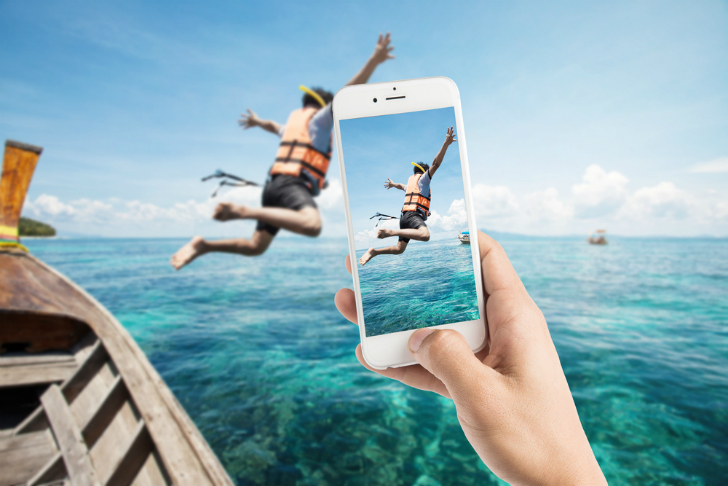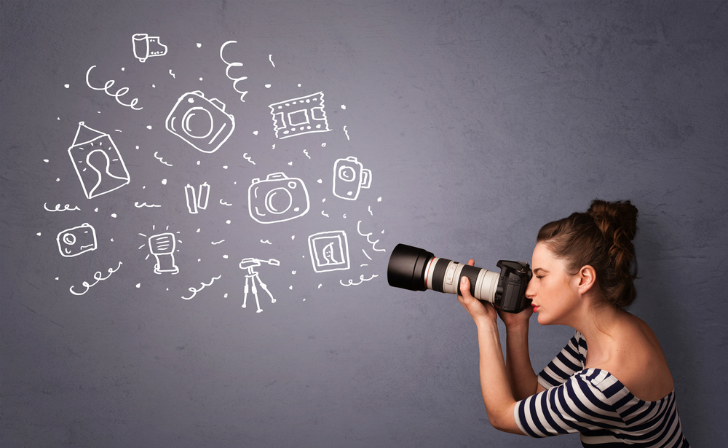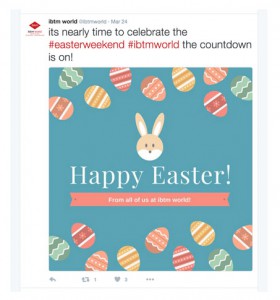There’s nothing new about event photography, it’s been around forever and for years most of us likely followed a similar process.
Brief your photographer pre-event to make sure all the key elements of your event will be covered. He or she shoots at the event and then finally, a couple of weeks later, we receive a dropbox or hard-drive full of fantastic images that get added to the website and so on.
If you are lucky, you might also have a press style photographer who turns a few shots around the same day to pop on your Facebook page.
Don’t get me wrong, I’m not criticising this traditional approach, there is absolutely still a need for it, social media hasn’t changed the fact that we need professional photographers with tight briefs resulting in lovely high-end edited images to stick on the website and to use in our marketing material post-event.
However, social media has added a new dimension, new expectations. We, and more importantly our attendees now expect everything quicker; they want to engage and explore your event online (even while attending) via every type of available media.
No surprise then, that this includes photography via the likes of Facebook, Instagram and Twitter. So, with that in mind, here are our top tips for making the most of social media and event photography.
1. Plan dedicated social media photography resources…
These days we are all pretty used to snapping away with our smart phones and posting the results across a plethora of social platforms. So, why not simply rely on your onsite team to all “take a few shots” on their phones?
Here’s why not:
- If it isn’t someone’s specific responsibility it’s unlikely you will get all the shots you need. Onsite is generally a busy and unpredictable time for members of your organising team and it is almost guaranteed that something perceived to be more important than social media pics will crop up. One person also helps ensure you get a consistent style and composition across your images.
- A decent smart phone is definitely your best option for social pics, giving you ample quality and super easy sharing to your social platforms. However, don’t expect your team member to use their own phone, providing your dedicated snapper with kit has a number of benefits; you can ensure the phone and more importantly its camera are good quality, staff can share as many photos as they want using the company paid for data allowance and pre-event you can check all the basics are in place, apps installed, accounts logged in and batteries charged.
- Most photographers will be also be willing to help with a limited number of shots for social media, but make sure you discuss this with them pre-event and include it in their brief. Professional photographers will generally be shooting images in formats that are not quick or easy to convert for social. That said, if they know they need to give you a batch of 10 or 12 social media optimised images at the end of each day, they can plan that in and in my experience are usually willing to do so.
2. Remember to focus on the basics, plan and brief…
Don’t forget to plan. Just because you’re shooting images only for your social sites it doesn’t mean you should neglect the basics.
- In exactly the same way as you would for your traditional event photographer, prepare a brief outlining the shots you require, think about what shots might work well post-event and what you might use them for in future.
- Don’t forget that all the same rules apply, busy room shots, smiley faces, networking, handshakes and so on… Portray your event in its best possible light.
3. Make the most of your social photography…
Onsite social photography doesn’t have to stop with the basics of capturing images and sharing them across your platforms. Social media and events seem to be big business for software and tech developers these days. There is an ever-increasing range of tools and suppliers out there to help your social photography work harder onsite.
- Big screen displays for social content continue to increase in popularity and sophistication. Platforms such as Tagboard and Tint offer all sorts of displays; approval and interaction features that can have a big impact, allowing you to showoff the best images live from your event to your participants.
- Website feeds are a great way to showcase images live from your event to the outside world, potentially even encouraging others to attend on subsequent days or editions. There are plenty of 3rd party plug-ins out there for this, but to be honest it’s a pretty simple job to set-up an Instagram feed on a website, so talk to your IT or web team who should be able to help.
- Curation tools are a great way to pull together photos from your event and when complimented with other social content such as tweets and video provide you with a centralised round up of your event’s activity. This can then be shared with your audience; reinforcing the value they got from attending but also encouraging those who didn’t attend to do so in future.
4. Have a year round strategy…
Photography for social media shouldn’t just be about shooting and posting images during or immediately after your event, the shots you take could be a valuable resource year round, here’s why:
- Stats show that Facebook posts that include a photo get on average 53% more likes than those without, so making the most of your images outside of the event can have big benefits for your social activity in general. Look to include images in your posts wherever possible.
- Regular posting is important on image led sites too. If you have an instagram or Pinterest account then aim for regular posting to avoid your presence looking neglected and therefore potentially brand damaging.
- There are some great online tools out there to help you make even more of your images and create other useful graphics too. Site like Canva and Picmonkey let you add text, icons, calls to action and more, giving you the ability to create a form of mini social media posters that can be really effective. Here is a recent example:
5. Make sure you are covered legally…
Over the past few years I’ve read various articles on how the explosion of smart phones and social image sharing sites have created some big grey areas around image consent for event organisers. The conclusions of which all seem to be fairly consistent and offer a few simple bits of advice:
- Look to integrate consent into registration and sign-up processes for your event. Be as specific as possible when explaining when and where images will be taken and what you intend to do with these post-event.
- Consider introducing onsite signage explaining or reiterating the above to capture anyone such as VIPs, speakers etc who might not have come through the standard participant registration systems.
- Most importantly though, talk to your legal team about what you will be doing onsite, what you plan to do with images post-event and therefore what you need to do before, during and after your event to make sure you are squeaky clean.
In summary…
Social media and event photography shouldn’t be a bonus or ad-hoc activity that takes place if we have the time.
Being able to access event images across social is now a basic expectation for most event participants and can provide multiple benefits as an organiser.
Therefore, dedicated resource and planning are required to achieve success and to really maximise impact 3rd party software and technology is essential. You can discover the latest event technology and opportunities for maximising your social media and photograpy impact at IBTM World, the event for event professionals.
So, as the old saying goes, “a picture is worth a thousand words” so make them count!





good site thanks for sharing